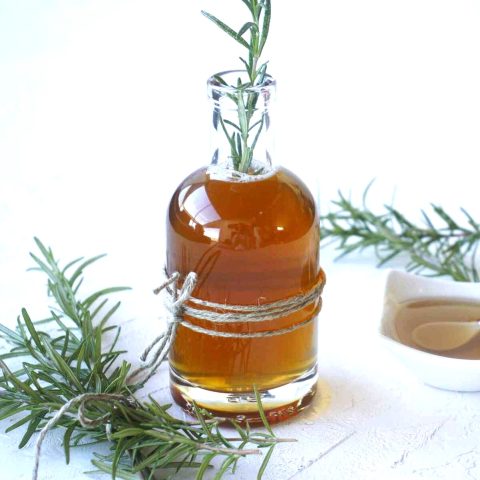This wild garlic pesto recipe is nutritious and seasonal, perfect for when you can forage wild garlic leaves. Adding young dandelion leaves enhances the detoxifying effect.
Spring is the ideal season to forage for wild garlic and young dandelion leaves. I have combined them because they mature at the same time and are often found near each other. Once you’ve gathered these fresh ingredients and transformed them into a creamy pesto, a world of culinary possibilities opens up. You can use this pesto in hummus, mashed potatoes, soups, or as a dressing for salads. This fleeting opportunity to enjoy foraged ingredients lasts only a few weeks, so don’t miss out!

Foraging for Wild garlic
Wild garlic, also known as ramps, ramsons, forest leek, spring onion, wild leek, or wood leek, is a springtime favorite. Wild garlic leaves typically begin to appear in early March, with flowers emerging a month or two later. By June, the season is over. Like dandelion leaves, it’s best to pick wild garlic early in the season while the leaves are still tender and full of flavor and older leaves can become bitter and astringent.
Wild garlic typically grows in deciduous woodlands, thriving in shade and damp ground. When you find wild garlic, you’ll often discover dense patches covering large areas of the forest floor. Its bright green leaves are long and pointed, with flat edges, and are easily identifiable. To confirm, crush a leaf in your hands and take a sniff and you should get a strong aroma of garlic.
However, be cautious, as it can be confused with the poisonous lily of the valley. The easiest way to tell the difference is by smell and wild garlic has a distinct garlic scent, while lily of the valley doesn’t smell of garlic.
Wild garlic is nutrient-rich, containing vitamins, minerals, iodine, and other beneficial substances. According to nutritional scientist Tilly Spurr, wild garlic may help fight cancer: “Wild garlic kaempferols also act as chemopreventive agents, inhibiting the formation of cancer cells. In both cases, wild garlic was seen to have greater potency than traditionally cultivated garlic.”
If you have abundant wild garlic leaves, use them to make this emerald green herb oil to garnish dishes.
other recipes with ramp leaves:

Foraging Dandelion greens
All parts of dandelions are edible and offer many health benefits. I have used them in various recipes, from dandelion capers to dandelion fritters and bitters.
While mature dandelion leaves tend to be quite bitter, the younger ones have a milder bitterness that is enough to help cleanse your digestive system. They are rich in vitamins and minerals, adding a nutritious boost to your meals.
The name “dandelion” comes from the shape of the leaves. “Dents de lion” in French means “teeth of the lion,” which describes the jagged edges of dandelion leaves. The leaves are hairless with toothed edges, and the orientation of these “teeth” points back toward the basal rosette center.
Due to their diuretic properties, dandelions might help reduce water retention, increase urination, and support the liver in removing toxins. Similarly, lemongrass tea has these properties.
Dandelion leaves may also aid in weight loss. High in fiber and low in calories, dandelion leaves contain enzymes that help break down body fat.
Other recipes with dandelions:
Salve & lip balm with dandelions

Ingredients to make this Springtime Favorite Pesto
wild garlic leaves
When making pesto, ensure you prepare it as soon as possible after collecting the leaves, as they lose freshness quickly.
Using a pestle and mortar to make pesto is perfectly fine. I’ve made lemon pesto sauce and Thai basil pesto this way; this time, however, I used a food processor. Both options are fine.
young dandelion leaves
forage young and crunchy dandelion greens, they are the best for this recipe.
Pine seeds
Full of protein and iron, pine seeds have many medical benefits, and I found them important for this pesto recipe. However, they are expensive and can be replaced with walnuts, almonds or pecans.
Finely Grated Parmesan Cheese
I used freshly grated Parmesan cheese but you can also use Grana Padano. Just stay away from pre-grated cheeses as they are usually coated with silica to avoid sticking together which affects the taste.
Clove of garlic.
wild garlic leaves have already garlicky flavor, so taste the pesto before adding garlic clove
Extra Virgin Olive oil
Use high-quality extra virgin olive oil for the best result.
Lemon Juice
I was just adding lemon juice but some people like to add the lemon zest as well. Sea Salt and pepper to taste

Wild Garlic Pesto with Dandelions Recipe
First step: Toast the Pine Nuts
In a dry skillet over medium heat, toast the pine nuts until golden and fragrant. They are easy to burn so watch them carefully.
Second step: Prepare the Greens
Wash and dry the wild garlic and dandelion leaves. Remove any tough stems.
Third step: Combine the Ingredients
In a food processor or a blender
Place all the ingredients into a food processor. Add the toasted pine nuts, wild garlic, dandelion leaves, garlic (if using), Parmesan cheese and lemon juice. Lastly, add the olive oil until the mixture reaches your desired consistency.
using pestle and mortar
add the ingredients into the mortar and, gradually grind them together, adding the oil gradually while grinding the ingredients until you achieve a smooth paste.

Fourth step: Season and Serve
Adjust the taste with salt and pepper and consistency with a squeeze of lemon juice or drizzle some oil.
Serve the pesto immediately.

How to make wild garlic pesto pasta and other uses
After preparing your pesto, you can add it to your pasta dish. Simply mix the pesto with the cooked pasta of your choice until evenly coated. To create a creamier texture or a milder flavor, consider adding a dollop of sour cream or cottage cheese. Alternatively, you can blend the pesto with mashed potatoes, add it to salad dressing or dough to make pesto pinwheels. I enjoy it as a topping for grilled chicken, fish, or a spread on toast. The possibilities are endless for incorporating this versatile sauce into your meals.
How to store homemade ramp & dandelion pesto?
Store the ramp pesto in an airtight container in the fridge for up to a week. Before sealing, cover the surface with a thin layer of oil to prevent the pesto from discoloring too quickly.
To Freeze it, place it in the refrigerator to extend its shelf life to 3-4 months. I like to keep it in ice cube trays, like parsley, and take one or two cubes to add to soup or pasta.


Wild Garlic Pesto Recipe with foraged Dandelion greens

This wild garlic pesto recipe is nutritious and seasonal, perfect for when you can forage wild garlic leaves. Adding young dandelion leaves enhances the detoxifying effect.
Ingredients
- 4 table spoons of pine seeds
- 2 handfull of wild garlic leaves
- 1 handful of young dandelion leaves
- 50 ml of olive oil
- 50 g of parmesan
- 1 garlic clove optional
- lemon juice from 1 lemon
- salt
- pepper to taste
Instructions
- In a dry skillet over medium heat, toast the pine nuts until golden and fragrant. They are easy to burn so watch them carefully.
- Wash and dry the wild garlic and dandelion leaves. Remove any tough stems.
- Combine the Ingredients
In a food processor or a blender
Place all the ingredients into a food processor. Add the toasted pine nuts, wild garlic, dandelion leaves, garlic (if using), Parmesan cheese and lemon juice. Lastly, add the olive oil until the mixture reaches your desired consistency.
using pestle and mortar
add the ingredients into the mortar and, gradually grind them together, adding the oil gradually while grinding the ingredients until you achieve a smooth paste.
- Adjust the taste with salt and pepper and consistency with a squeeze of lemon juice or drizzle some oil. Serve the pesto immediately.
Notes
Store the ramp pesto in an airtight container in the fridge for up to a week. Before sealing, cover the surface with a thin layer of oil to prevent the pesto from discoloring too quickly.
To Freeze it, place it in the refrigerator to extend its shelf life to 3-4 months. I like to keep it in ice cube trays, like parsley, and take one or two cubes to add to soup or pasta.
Recommended Products
As an Amazon Associate and member of other affiliate programs, I earn from qualifying purchases.
Nutrition Information:
Yield:
8Serving Size:
1Amount Per Serving: Calories: 78Total Fat: 7gSaturated Fat: 2gTrans Fat: 0gUnsaturated Fat: 5gCholesterol: 5mgSodium: 186mgCarbohydrates: 1gFiber: 0gSugar: 0gProtein: 2g
Fermented Drinks & Herbal Wines
This rich Herbal fire-cider packed with antioxidants, minerals and vitamin C is an alcohol-free way to boost your immune system with nutrient-rich herbs, fruits and roots and warm up your body.
Join me in an adventure to turn rose-scented rosehips into fragrant wine. It’s a delicious way to use and preserve rose hips for year-round enjoyment.
Dandelion bitter stimulates the digestive system, helps to lower your level of blood sugar and has a positive effect on stress. From mild digestions to heartburn, bitters increase digestibility and help you calm an upset stomach.
This floral and fruity elderflower cider makes it a uniquely refreshing drink. In addition, it is a creative way of preserving apples.
Homemade kiwi wine is far from the sweet fruit-based wines you buy in the liquor store. This fruity wine is a crisp yellow wine full of tropical flavor with a touch of tart berries. It is a vibrant beverage that adds a unique flair to your wine cellar.
Pine Needle Soda is a fizzy soda made with 3 ingredients. Also called pine needle Sprite, this soda recipe is a foraged and fermented drink with a distinct citrusy pine needle taste.
Learn the traditional way of herbal infusion by macerating the primrose flowers in wine. This simple extraction method will allow you to enjoy a delicious and flowery taste of primrose wine as well as its medicinal benefits.
This pear wine recipe makes a light, refreshing wine that adds a unique flair to your wine cellar. It is also an easy way to preserve and enjoy the flavor of ripe pears all year long.
These fermented cherry tomatoes can be an easy way to preserve and pack tomatoes with probiotics that burst in your mouth with refreshing flavors.
These fermented bananas are sweet with a subtle tang. Packed with probiotics, they are an easy way to sneak beneficial bacteria into your smoothies or banana bread.
These fermented apples are sweet and slightly tangy. They are probiotics-rich and the perfect way to sneak probiotics into smoothies or cakes.






















